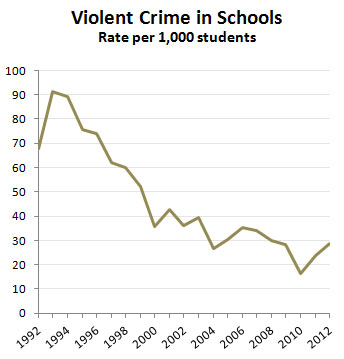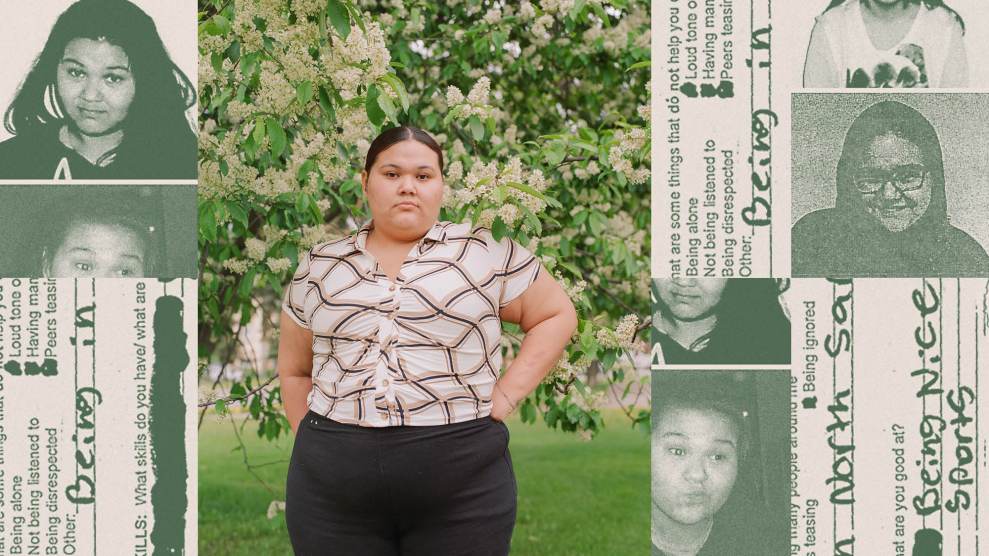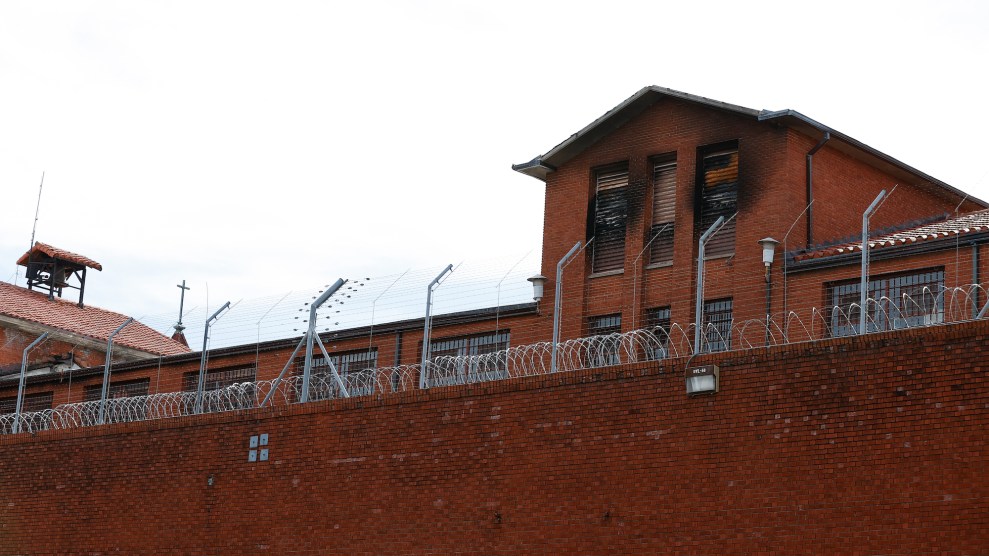 Via Tim Lee, here’s a pretty interesting chart from a newly released report on crime in schools. It shows the rate of violent crime committed on campus: rape, robbery, assault, and sexual assault.1 And it sure looks pretty familiar, doesn’t it? It peaks in 1993, about 18 years after leaded gasoline started being phased out in 1975, then turned down and continued declining for the next 20 years.
Via Tim Lee, here’s a pretty interesting chart from a newly released report on crime in schools. It shows the rate of violent crime committed on campus: rape, robbery, assault, and sexual assault.1 And it sure looks pretty familiar, doesn’t it? It peaks in 1993, about 18 years after leaded gasoline started being phased out in 1975, then turned down and continued declining for the next 20 years.
Since the oldest students in our schools are 18 years old, the crime rate should start to flatten out approximately 18 years after the final elimination of leaded gasoline in 1995. That would be 2013. And so far, it looks like that’s about what’s happening.
All the usual caveats apply. This isn’t proof, it’s just a data point. But it’s a pretty compelling data point, isn’t it?
1Homicide isn’t included, but the homicide rate in schools is so low that it doesn’t affect these figures noticeably.













